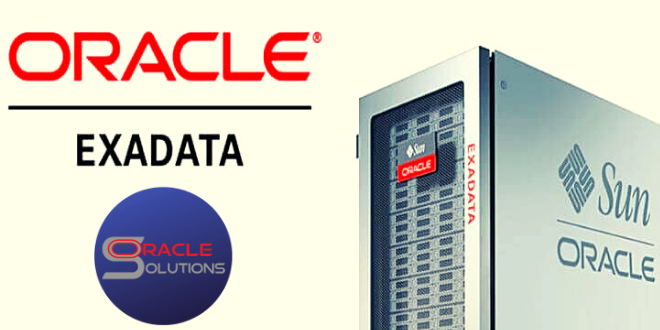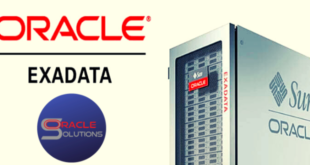Introducing Exadata X9M
The Exadata X9M family, including Exadata Database Machine, Exadata Cloud@Customer, and Zero Data Loss Recovery Appliance, continue to take advantage of our latest cutting edge network technology introduced in Exadata X8M, RDMA over Converged Ethernet (RoCE). Also introduced in Exadata X8M, and continuing in X9M, is the shared storage persistent memory acceleration tier. This combination of powerful technologies in Exadata’s unique architecture has allowed Exadata System Software, the not-so-secret-sauce of Exadata, to once again increase performance for OLTP and Analytics workloads, improve consolidation abilities, enable reduced infrastructure spend, and remove management overheads for the X9M release.
We’ll get into the details in a second, but let’s first look at some workloads running on Exadata X9M:
Firstly, high-performance online transaction processing and modern workloads such as IoT, Financial Trading, and eCommerce. For this, the world’s fastest OLTP Database machine just got even faster (and not by a little!). Using sophisticated software introduced with Exadata X8M and persistent memory, we saw IOs per second reach 16 million in a single rack. Now, Exadata X9M boasts 27.6 million 8k read IOs per second, a 70% increase! Latency remains at a blistering 19 microseconds for Exadata X9M. As with all Exadata performance metrics, these are real-world, end-to-end database workload numbers, not low-level IO tools using small-sized test workloads typically used by storage vendors.
There is something for the analytics workloads too. Scan throughput (the bandwidth allowing bulk amounts of data to be processed in Exadata Storage Servers) in Exadata X9M tops the 1TB (Terabyte) per second mark in a single rack, up from 560 GB (Gigabytes) per second on Exadata X8M. An 87% increase generation over a generation! The fastest analytics database machine – now even faster.
Consolidation on Exadata becomes even more enticing with Exadata X9M. An increase in drive capacity per storage server, and increased CPU cores and memory footprint in the database servers, means you can now run more Oracle database workloads on the Exadata platform. (Did you know that Exadata allows over 4000 pluggable databases per container database? That’s a lot of room for consolidation.) Higher consolidation densities mean achieving more with less. Support more users with less infrastructure spending. Combined with lower management overheads, your savings in CAPEX and OPEX begin to multiply. More databases, in fewer floor tiles.
How are these incredible numbers achieved, and how can we satisfy the most dense workloads, you ask? It’s through Exadata’s unique software and hardware combined architecture, which pushes computing power from the database servers to the smart storage servers. As new technologies like persistent memory are engineered into the caching hierarchy alongside existing NVMe flash cache, Exadata can make the most out of the increases in PCIe and memory bus performance. And, by utilizing local hardware performance of the storage servers, and only sending relevant blocks back to the database server, it means that as storage capacity increases, so too does storage performance. Also, with Exadata, Maximum Availability Architecture is a core tenet, which means redundancy is built-in, not an afterthought.
Let’s have a look at the hardware for Exadata X9M.
Exadata Hardware
Exadata X9M-2 Database Server
Exadata X9M two-socket Database Servers use the latest 3rd Generation Intel® Xeon® Scalable Processors. Intel® Xeon® Platinum 8358 Processor, a thirty-two core processor, delivers an increase in cores of 33% over the Exadata X8M generation. Memory size in Exadata X9M-2 has increased in step with the increased CPU core density, allowing customers to maintain memory to core ratios with options of 512 GB, 1 TB, and 2 TB per server. In addition, the memory bandwidth increases by 64%, greatly accelerating memory bandwidth-sensitive operations. To help you get up and running quicker, these memory options are available at ordering time, removing the need to add the memory at installation time. Local storage on the database server has received a performance overhaul, swapping out the 4x 1.2 TB 10K-RPM hard disk drives with 2x 3.84 TB NVMe SSD drives (expandable to 4x 3.84 TB drives), allowing for faster software updates and backups. Exadata X9M sees the inclusion of PCIe4.0, which provides a significant boost to RDMA over Converged Ethernet (RoCE) networking. Speaking of client networking, additional flexibility has been incorporated into the default configuration; you can now order Oracle Exadata X9M-2 Database Servers with up to three network interface cards.
Exadata X9M-2 High Capacity Storage Server
Exadata X9M-2 High Capacity Storage Servers adopt the latest sixteen-core 3rd Generation Intel® Xeon® Scalable Processors. Memory gets an upgrade in the storage tier to 256GB, up from 192GB in the X8M. Similar to the Database Server, the memory bandwidth increases 64%. The increased memory bandwidth helps the shared persistent memory caching tier, which moves to the next generation, Intel® Optane™ Persistent Memory Series 200. PCIe4.0 in Exadata X9M boosts the Flash card performance, which also moves to the next generation, the F640v3, capacity is maintained at 6.4 TB. The RoCE Network Fabric receives an increase in performance with PCIe4.0, in step with the database server. Finally, the twelve hard disk drives increase in capacity to 18TB, up 28% from X8M.
Exadata X9M-2 Extreme Flash Storage Server
Exadata X9M-2 Extreme Flash Storage Servers keep in step with the High Capacity Storage Server, adopting the latest sixteen-core 3rd Generation Intel® Xeon® Scalable Processors, memory, and persistent memory. As with the X9M High Capacity Storage Server, the inclusion of PCIe4.0 boosts the Flash card performance, which also moves to the next generation, the F640v3. Capacity of the eight flash cards continues at 6.4 TB each. As with the High Capacity Storage Server, RoCE Network Fabric in the Extreme Flash Storage Server receives an increase in performance with PCIe4.0 as well.
Exadata X9M-2 Extended Storage Server
Exadata X9M-2 Extended Storage Servers adopts the latest sixteen-core 3rd Generation Intel® Xeon® Scalable Processor. Memory remains at 96GB. Similar to the Database and other Storage Servers, RoCE Network Fabric receives an increase in performance with PCIe4.0. The twelve hard disk drives increase in capacity to 18TB, up from 14TB in X8M, a 28% increase.
Exadata X9M-2 Storage Expansion Rack
Exadata Storage Expansion Rack adopts the latest Exadata X9M-2 High Capacity and Extreme Flash Storage Servers. Additional High Capacity, Extreme Flash, and Extended Storage Servers can be added to existing X8M or X9M Storage Expansion Racks.
Scalable Licensing of Cores
Exadata X9M allows users to limit the number of active cores in the database servers, reducing required database software licenses. At installation time, a minimum of 14 Database Server cores must be enabled on the X9M-2 servers. Oracle Exadata Deployment Assistant (OEDA) is used during installation to implement this reduction. You are then able to increase the active core count when required over time. This feature, called Capacity On Demand, has been available since Exadata X4-2 generation. The minimum number of active cores required has been constant through Exadata X5, X6, X7, X8, X8M, and now X9M.
Exadata System Software 21.2
As we announced in May this year, the Exadata System Software Release 21.2 brings further innovations to the performance and manageability of your Exadata fleet. Exadata 21.2 builds on all the innovations delivered in Exadata 20.1. New features include:
- Persistent Storage Indexes
- Persistent Columnar Cache
- Smart Scan Metadata Sharing
- ACFS IO Caching
You can read details on these updates in our announcement here and in the Exadata Database Machine System Overview. Some hardware-specific updates that weren’t mentioned, but included in 21.2 include:
Support for Exadata X9M Hardware
The Exadata X9M family requires Exadata System Software release 21.2.0.0.0 at a minimum. Additional software support for new hardware servers and components were added to Exadata 21.2.
Smart Scan Fast Decryption
Smart scans on encrypted data require temporary staging buffers to decrypt data from the IO buffer, followed by disk filtering and projection. Previous to Exadata SW 21.2, this temporary buffer is copied back to the data IO buffer for filtering and projection. Now with Exadata Software 21.2 and Exadata X9M hardware that enables new instruction sets, Smart Scan Fast Decryption implements algorithms to use the temporary buffer directly in filtering and projection. This results in 2.4x faster decryption for smart scans in X9M, and works with all currently supported Oracle Database versions.
 Oracle Solutions We believe in delivering tangible results for our customers in a cost-effective manner
Oracle Solutions We believe in delivering tangible results for our customers in a cost-effective manner

